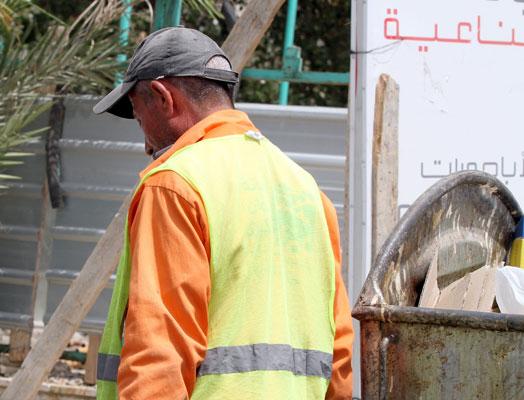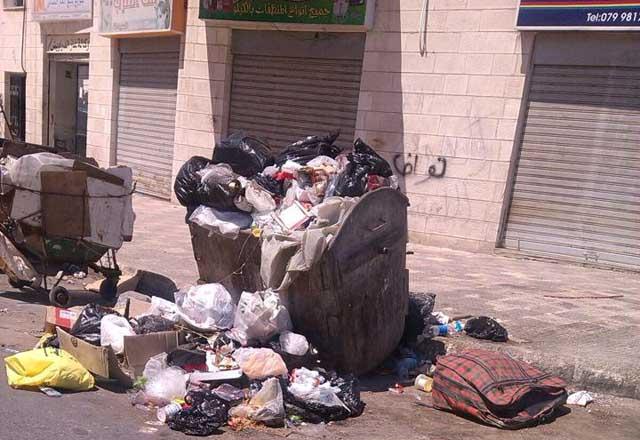You are here
Volume of garbage generated in Amman hits record levels over Eid — municipality
By Muath Freij - Jul 10,2016 - Last updated at Jul 10,2016

There are currently 4,000 sanitation workers deployed in the capital (Photo by Osama Aqarbeh)
AMMAN — The volume of garbage collected in Amman reached record levels during the recent religious holidays as the population of the capital rose, a municipal official said on Sunday.
Greater Amman Municipality (GAM) teams collected 115,000 tonnes of garbage during Ramadan and Eid Al Fitr, the holiday that marks the end of the fasting month, said Basem Tarawneh, GAM deputy director for districts and environment affairs.
“The teams collected 94,000 tonnes of garbage during Ramadan and on the eve of Eid they collected 5,000 tonnes and this is a record,” he told The Jordan Times over the phone.
Tarawneh said there was an increase of between 400 and 500 tonnes of garbage each day during Ramadan compared to other months.
Consumption of food and beverages tends to rise during the fasting month due to a change in eating habits, as Muslims abstain from eating and drinking from dawn to sunset.
In a previous interview with The Jordan Times, Tarawneh said the quantity of trash increases by around 15 per cent during Ramadan, while around 3,000 tonnes of waste are collected on an average day during the rest of the year.
He added that organic materials constitute between 60 and 65 per cent of household waste produced during the fasting month.
“Also, because of the increase of the number of residents in Amman, there has been an increase of garbage generation throughout the year as well by 400 tonnes,” he added.
Izzedin Shammout, a former GAM spokesperson, told The Jordan Times in February that there were around 4 million people living in Amman, and that the city had not been expected to reach this number until 2025.
Tarawneh said this would add more pressure on GAM teams and sanitation workers in particular.
“There are currently 4,000 sanitation workers deployed in the capital, and this number changes sometimes. We need 300 more by 2017 to meet the needs of the capital,” he added.
Related Articles
Sanitation workers collected over 15,000 tonnes of household waste during the Eid Al Fitr holiday, according to the Greater Amman Municipality (GAM), which reported a notable increase in waste production.
AMMAN — Greater Amman Municipality (GAM) vehicles and sanitation workers collected 17,150 tonnes of garbage during Eid Al Fitr holiday, the
AMMAN — Organic materials constitute between 60 and 65 per cent of household waste produced during the fasting month of Ramadan, the Greater













